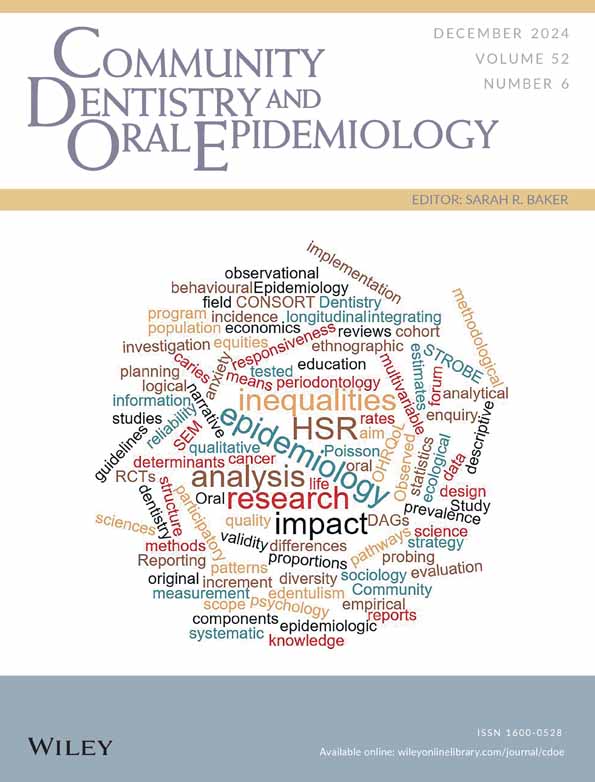Health utility attributable to oral conditions in Japanese adults
Abstract
Objective
Utility values enable relative comparisons across various health conditions, providing information for efficient allocation of healthcare resources. This study aimed to (1) quantify the utility values attributable to oral health-related quality of life (OHRQoL) in Japanese adults and (2) develop models for converting the 14-item Oral Health Impact Profile (OHIP-14) scores into EuroQoL 5-dimension 5-level (EQ-5D-5L)-based utility values.
Methods
This was a cross-sectional study. Data from a large-scale Internet survey of Japanese adults conducted in 2022 (n = 28 405; mean age 48.2 years) were analysed. Multiple linear regression models were fitted to investigate the association between OHIP-14 scores and EQ-5D-5L-based utility values, adjusting for confounders. Conversion models were developed using a random half of the participants, and the observed and predicted utility values in the other half were compared to evaluate the model performance.
Results
Among the participants, 55.2% scored 0, 20.9% scored 1–5 and 23.9% scored 6–56 on the OHIP-14, corresponding mean utility values of 0.93, 0.90 and 0.84, respectively. A one-point increase in the OHIP-14 score was associated with a lower utility value (coefficient: −0.0053; 95% confidence interval:health-related quality of life −0.0056, −0.0051). The estimated utility value attributable to OHIP-14 was −23.3 per 1000 individuals, greater than that for other prevalent chronic conditions, including hypertension and diabetes (−2.9 and −7.1 per 1000 individuals, respectively). The conversion model incorporated the OHIP-14 total score, age, sex and self-rated health, predicted utility scores on average and captured differences according to the number of teeth lost. However, there was a discrepancy between predicted and observed utility values in the lower utility value groups.
Conclusion
OHRQoL substantially impacted utility values at the population level. The OHIP-14 holds the potential as a valuable tool for predicting average utility values based on oral health conditions; however, the prediction performance was relatively low for individuals with a lower health-related quality of life.
CONFLICT OF INTEREST STATEMENT
The authors declared no potential conflicts of interest regarding the research, authorship, or publication of this article.
Open Research
DATA AVAILABILITY STATEMENT
The data that support the findings of this study are available on request from the corresponding author. The data are not publicly available due to privacy or ethical restrictions.




